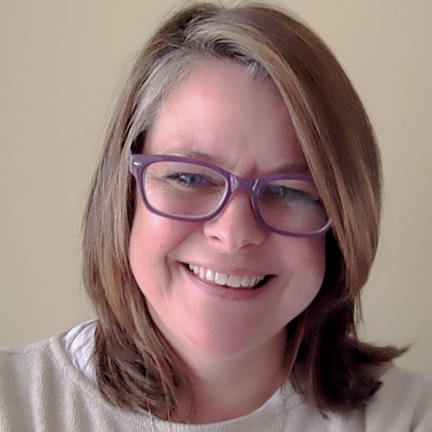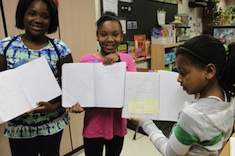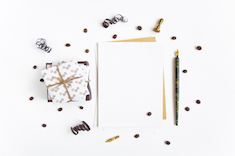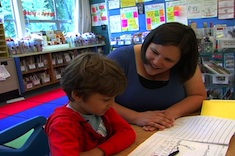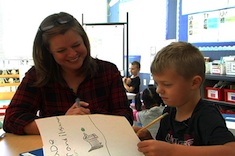End-of-unit celebrations are a norm in a writing workshop, but as the year progresses, I find that I can make the publishing process the celebration! In my class I begin the year of writing with non-genre-specific units of study. When it is time to publish, we fix up our pieces by coloring our illustrations and fixing up the words or illustrations. We celebrate each unit by reading our book to classmates or big buddies, or into Seesaw. We reflect on our pieces, clean out our writing folders, and look forward to starting fresh with a new unit of study.
So when my class writes personal narratives in the middle of the year, students have a good amount of reading and writing experience from these non-genre-specific units of study. It’s a great time to stretch our skills and to make the publishing process more than just fixing up. We take several days to improve our pieces and a final day to complete the publishing process. Students are focused, but the atmosphere feels joyful and celebratory.
New Titles
We start by taking a close look at the titles of our mentor texts. My students notice that the titles are short, they don’t tell what happens in the story, and they’re even a little mysterious, making us want to read the book and find out what happens. Students read through their own booklets and see if there are any titles they might revise.

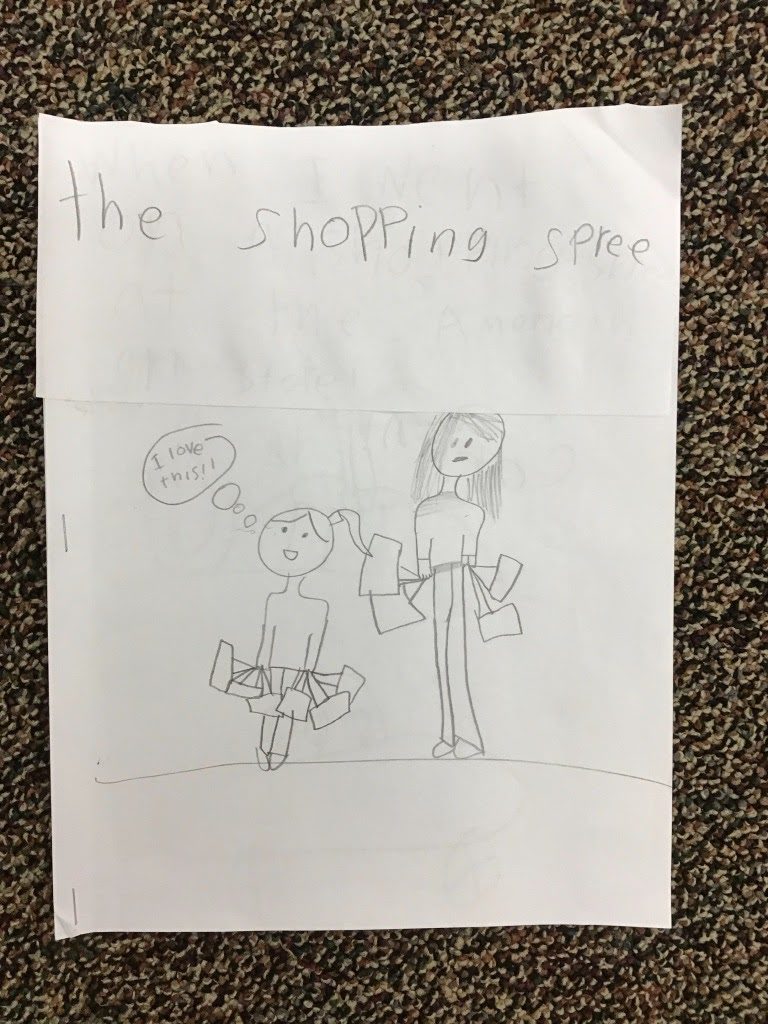
About the Author
Next we study “About the Author” on the inside flap of books. We look closely at these write-ups and make a list of what we want to include in our own “About the Author” pieces. Then students write their pieces while I take their author pictures. Often this writing is the trickiest because it is usually written in third person. Students can decide if they are ready to write it like the mentor texts or want to stick to a first-person author note. I acknowledge the difference and then send students off to give it a go.


Student “About the Author” Pages
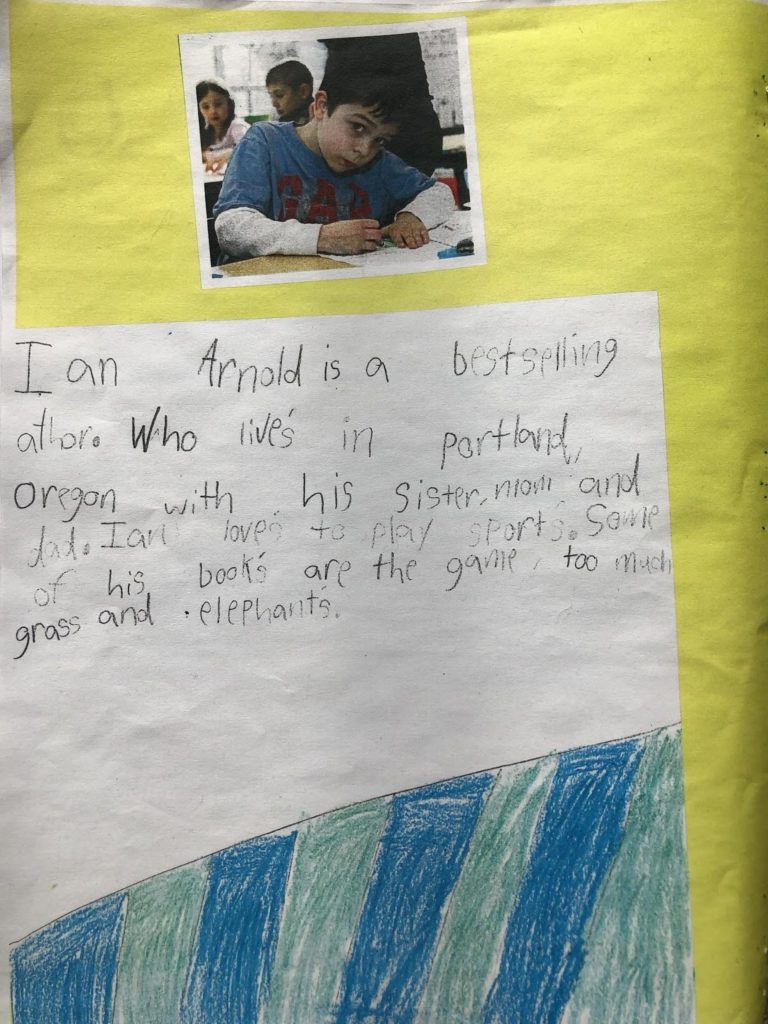
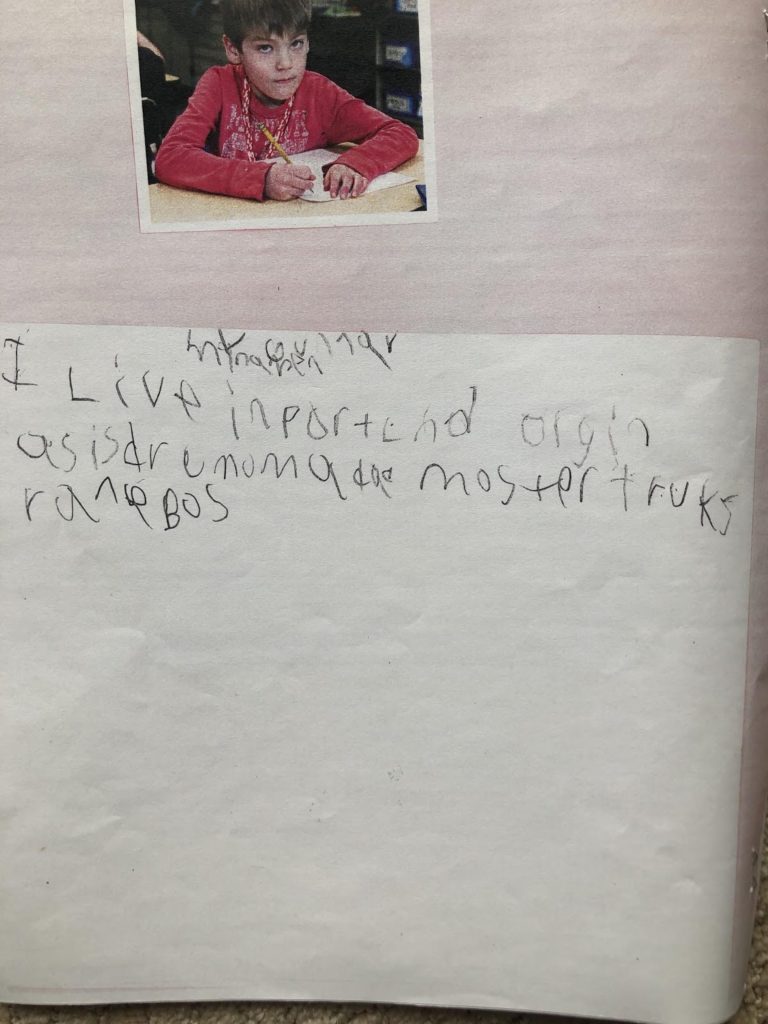

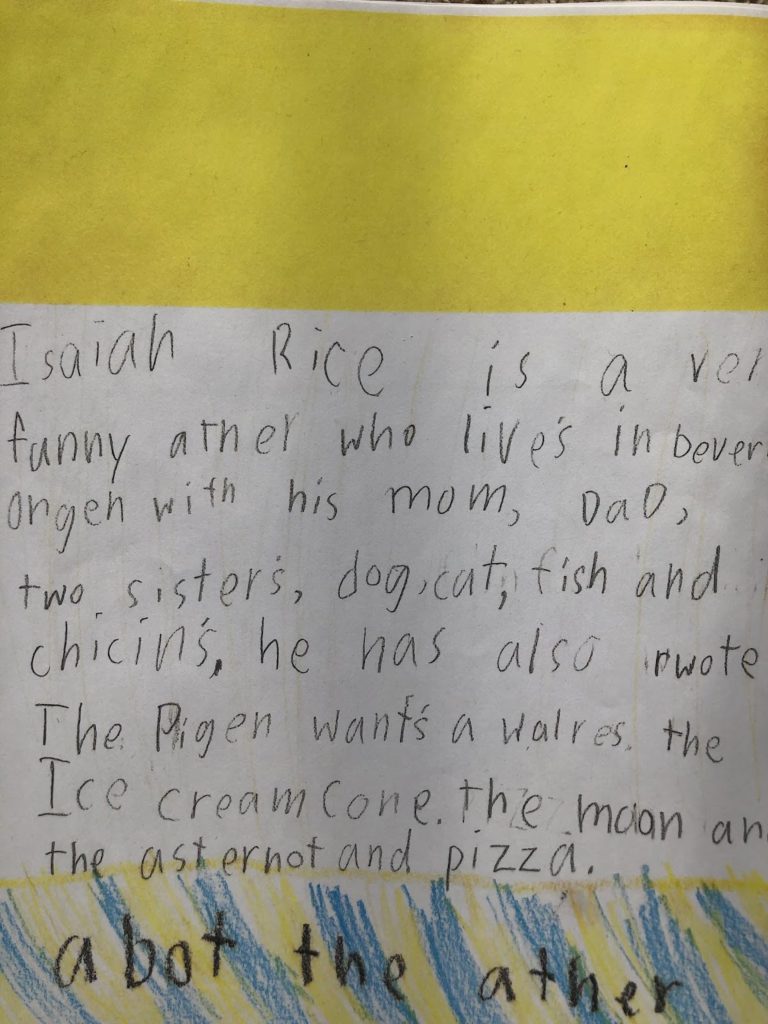
Book Covers
Our mid-year personal narrative writing feels like a more intense unit. Students have worked hard to learn about personal narratives and have spent the most time on these books, revising beginnings and endings as lessons have been taught. So, when we’re finally ready to put it all together, I introduce construction paper book covers and tools to bind them together.
I teach students to fold the construction paper in half to become a cover and to design, color, and glue a new cover on the front of the construction paper. Then we glue their author note on the back and staple, or bind, their booklet in between. One of the magical moments is when students realize that the cover to their original booklet has become the title page inside the cover, just like our mentor texts! For binding materials I put out hole punches, ribbon, staplers, and brads. We play music, make a mess with all of the material, help each other with bindings, and, in the process, celebrate our work.
Often students recognize that a dedication would be appropriate and add that to their inside cover. And just like that, the publishing has become a celebration, and reading and sharing our stories with peers and big buddies becomes the icing on the cake. Students are so proud to share their published books!
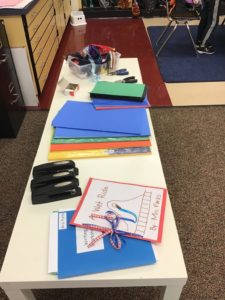
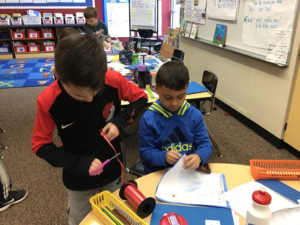
Published Works of… for the End of the Year
After the end of each unit of study, students empty their writing folders and take home their many drafts. I include a cover page with teaching points covered so parents know what is being taught and can see their child’s progress. I also share students’ published pieces with their parents at conferences, but I keep these final pieces until the end of the year. Then, I bundle up these published pieces with a title card: “The published works of: _____________” and send it home on one of the last days of school. I like to do this so that parents recognize the worth of these pieces and so that students see their accomplishments as real authors.

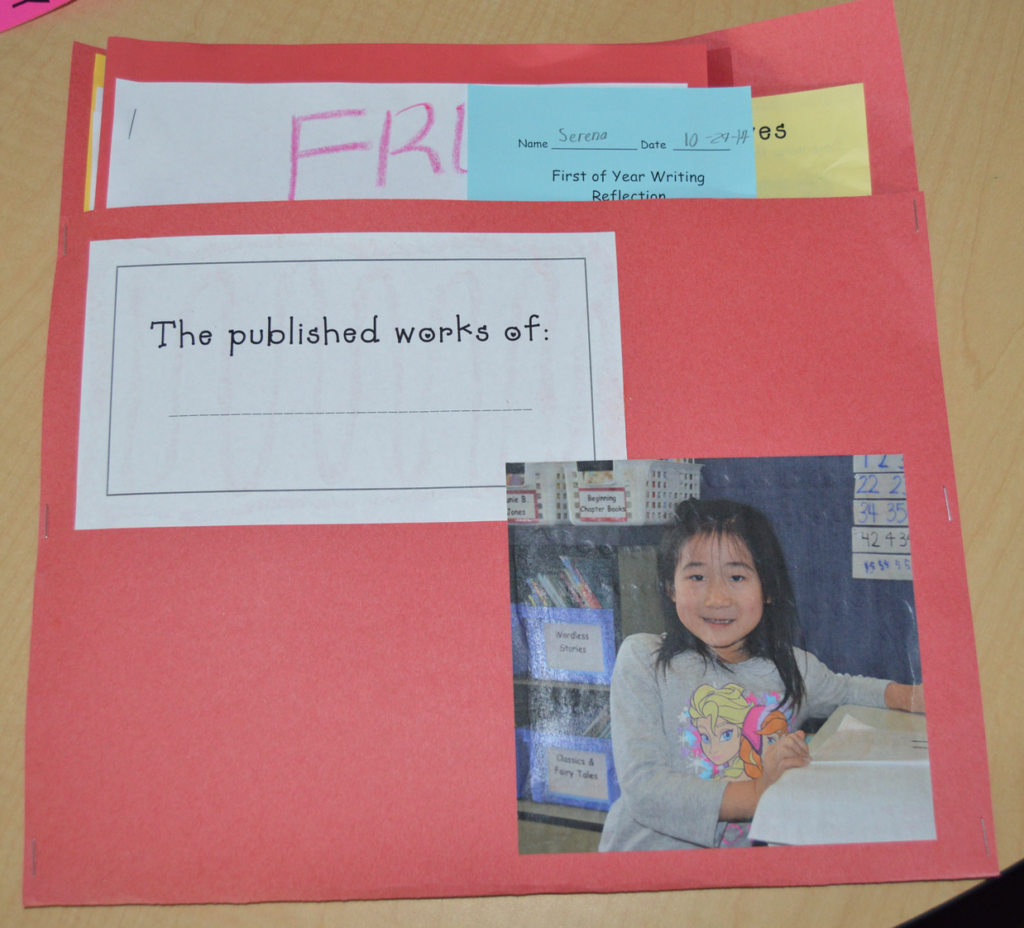
Editor’s Note: We find the approximation of conventional spelling and punctuation to be beautiful in student writing. To honor the process of young writers, we share their approximations in print.


